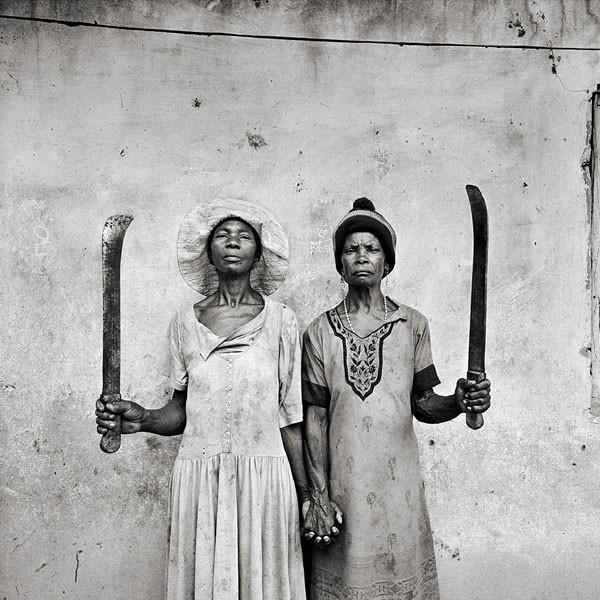Puerto Rico notes: Part 1 – Art as social practice

A recent work trip took me to Puerto Rico, where I had not visited for about ten years. Most of my time was spent in San Juan and its environs, but I also travelled to the southern city of Ponce, on Puerto Rico’s Caribbean coast, and the university town of Mayagüez in the west. We visited several artist-run initiatives, cultural institutions and sites, and artist studios.
Much has happened in Puerto Rico since my previous visit: the devastation of Hurricane Maria in 2017, the debt and public bankruptcy crisis and the resulting austerity measures, and, more recently, a strong earthquake swarm which caused significant damage in the south of the island. There have also been popular protests against the corruption and ineptitude in the local government, the largest of which occurred in July 2019. Negative population growth caused by migration, the rapid gentrification of traditional barrios, and the galvanizing effects of the Black Lives Matter Movement on local race activism further add to the combustible, culturally generative socio-political mix in this “free associated state” of the USA.
Puerto Rico has a long history of social and political activism, which started in the first half of the twentieth century with the nationalist response to the annexation by the USA. There is a long history of politically engaged art in Puerto Rico, and its diaspora, and much of it has been positioned against the island’s de facto colonial status and associated with the long-standing independence movement. This has, for instance, found expression in the island’s communal printmaking workshops and the choice of printmaking as a democratic medium of expression and agitation. Some of the best-known Puerto Rican posters and print portfolios, by mid- twentieth century artists such as Rafael Tufiño and Lorenzo Homar celebrate Puerto Rican culture as a form of resistance against American cultural and political imperialism.

Contemporary Puerto Rican art is even more radical in its political commitments which is at least in part a response to the recent crises, and the notions of “art as social action” and “cultural resistance” are foundational for many local art initiatives. Artists agitate for social justice issues, such as race and gender justice, LGBTQ+ rights, gentrification, and climate justice and the environment, along with Puerto Rico’s controversial political status, and they often do so in a collective, community-based manner. For many, this has meant stepping away from conventional art production. Many independent artist collectives were, for instance, involved in hurricane relief in their communities and served as organizing grounds and safe havens during the 2019 protests. Many also have community food and medicinal gardens. The Taller Lumpen/Bemba printmaking workshop in Mayagüez also provide their community with alternative mobile, solar-electricity and water sources, and we saw a prototype bicycle taxi with a solar phone charging port, made from recycled materials.
One of the highlights of the trip was our visit to Loíza, a traditionally Afro-Puerto Rican community along the coast to the east of San Juan which is known for cultural practices such as the bomba and plena music and dance traditions, and its Vejigantes masquerade, with fantastic horned masks made from coconut shells and wood. The municipality, which has a higher poverty rate than other parts of Puerto Rico, was severely affected by Hurricane Maria and neglected in the hurricane relief, which helped to energize community activism.
The best-known artist from the area is Daniel Lind Ramos, whose installation Maria caused a sensation in the 2019 Whitney biennial. The work referenced the hurricane as well as the community’s rich cultural heritage. Lind Ramos also designed the red, yellow, and green flag of the Loíza municipality, which flies proudly over the bridge over the Rio Grande that connects Loíza to the San Juan area. He is one of several notable artists who are active in the community.
We visited El Ancon de Loíza, which is a heritage site and community cultural centre and the landing site of the historic ferry that allowed residents to cross the Rio Grande before the bridge was built. There we saw an exhibition by another artist from the community, Juan Pablo Vizcaíno, whose collages and installations involve found materials, photos of community members, Vejigante masks, Santeria altars and other elements of Afro-Puerto Rican popular culture.
We also visited the Corredor Afro’s Casa Afro in the nearby seaside community of Piñones which, as the house’s name suggests, is dedicated to Afro-Puerto Rican art and culture. The Corredor Afro is a new, community-based cultural initiative of Marta Moreno Vego, a well-known Puerto Rican cultural scholar and activist, who was also the founder of the Frank H. Williams Caribbean Cultural Center African Diaspora Institute in New York City and who has also served as the director of El Museo del Barrio. The Casa Afro is, itself, an evolving work of art, covered in colourful mosaics by Celso Gonzalez, one of the artists associated with the project. We also saw an exhibition there which celebrated 50 years of the annual Bomba and Plena Festival in Loíza, seen mainly through the posters that were produced for those festivals, which include many outstanding examples of Puerto Rican poster art.
Both sites reminded us that political activism does not have to preclude the creative imagination, and that powerful things can happen, artistically, when one productively feeds the other.
Read more about my Puerto Rico trip in part 2 next week.
Dr Veerle Poupeye is an art historian specialized in art from the Caribbean. She lectures at the Edna Manley College of the Visual and Performing Arts in Kingston, Jamaica, and works as an independent curator, writer, researcher, and cultural consultant. Her personal blog can be found at veerlepoupeye.com.






